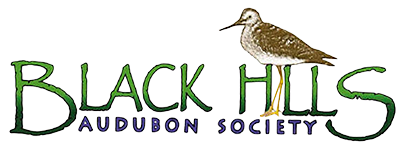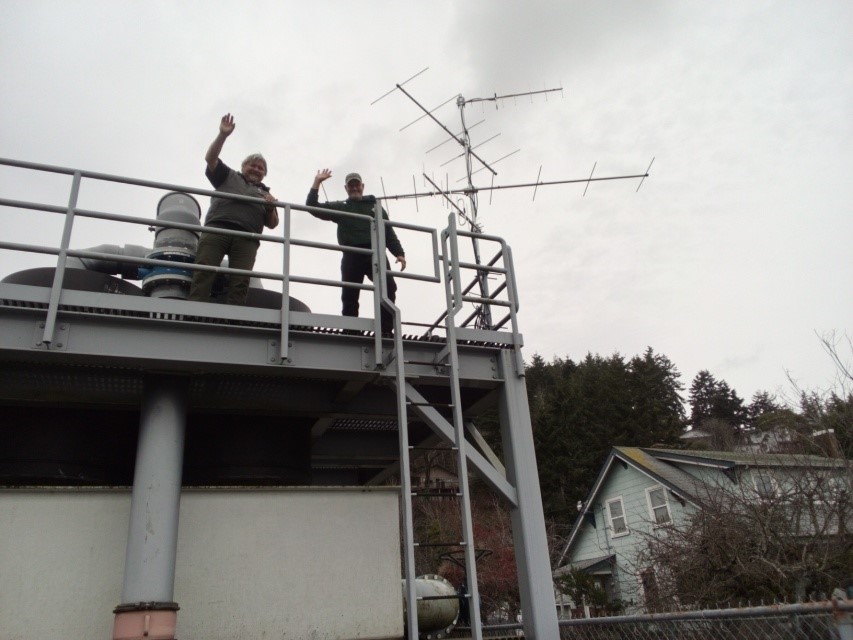Black Hills Audubon has completed the installation of a Motus tower in Hoodsport. A Motus tower has a set of antennas that can pick up signals emitted from geo-locator tags that have been attached to birds, bats and bugs. The BHAS tower is part of a shorebird migration project sponsored by the US Fish and Wildlife Department under the supervision of Vanessa Loverti. It is sitting on a platform at the WA Department of Fish and Wildlife’s Hoodsport Fish Hatchery. In the photo above, BHAS volunteer, Brian Keener (left), and hatchery manager, Mark Cylwik, finish hooking up the computer station to the tower which has four antennas.
This tower is part of an international collaborative research network that studies the ecology of migratory animals. The data collected is available to anyone – researcher or general public. If you visit their website, https://motus.org/, you can see the breadth of their efforts. If you drill down into their map, you can locate the yellow dot that represents our tower. Click on that and you will get the technical information about the tower. It has not detected a tag yet but it is not migration season. Billy Frank Jr. Nisqually Wildlife Refuge has a tower too. It has detected 25 tags since it was activated in June of 2022.
The previous method of tracking migratory birds involved putting a band on a bird’s leg or neck. To get data on this bird, it either had to be captured again, found dead, or, in the case of a large bird with a neck band, seen well enough by someone to read the number code on the band. The odds of any of this happening weren’t great. This new method of using automated radio telemetry is changing this field of research and we are excited to be part of that.
Our team of volunteers was instrumental in getting this project completed. Special thanks go to Brian Keener, Bruce Jacobs, and Mike Ruth for taking part in the tower installation which involved climbing up and down a very steep ladder on a very cold day in December.
Photo by Kathleen Snyder








